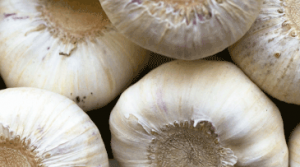β-cembrenediol ((1S,2E,4R,6R,-7E,11E)-2,7,11-cembratriene-4,6-diol) is a diterpenoid that is isolated from the leaves of nicotiana tabacum (tobacco) plants. β-cembrenediol has been found to have neuro-protective effects in mice, reducing ischemic brain injury. The effect was found in both pre-treated and post-injury mice. It does this by increasing the phosphorylation of Akt, a well-known neuroprotective pathway. Additionally, β-cembrenediol and analogs have been found as anti-migratory compounds in wound healing assays with prostate cancer cells.
β-cembrenediol, and it’s C-4 epimer α-cembrenediol are in stock and available for research use.
C1650 β-cembrenediol Methyl Ether
Martins A. H. , Hu, J., et al. “Neuroprotective activity of (1S,2E,4R,6R,-7E,11E)-2,7,11-cembratriene-4,6-diol (4R) in vitro and In vivo in Rodent Models of Brain Ischemia” Neuroscience. 2015, Apr 16; 291: 250-259. Doi: 10.1016/j.neuroscience.2015.02.001
Baraka, H. N., Khanfar, M. A., et al. “Bioactive Natural, Biocatalytic, and Semisynthetic Tobacco Cembranoids” Planta Med 2011 Mar:77(5):467-476. Doi: 10.1055/s-0030-1250478.

 Triple-negative breast cancer (TNBC), so named for its lack of expression of the genes for estrogen receptor, progesterone receptor, and Her2/neu, is a breast cancer subtype with a poor prognosis that is difficult to treat. Sulforaphane, an abundant dietary component found in broccoli, has been shown to inhibit cell proliferation and sphere formation of the cancer stem cell population in TNBC cells.
Triple-negative breast cancer (TNBC), so named for its lack of expression of the genes for estrogen receptor, progesterone receptor, and Her2/neu, is a breast cancer subtype with a poor prognosis that is difficult to treat. Sulforaphane, an abundant dietary component found in broccoli, has been shown to inhibit cell proliferation and sphere formation of the cancer stem cell population in TNBC cells.
 Sulfur-containing compounds isolated from garlic, known for their anti-inflammatory properties, are exhibiting chemopreventive effects in recent research by the National Cancer Institute.
Sulfur-containing compounds isolated from garlic, known for their anti-inflammatory properties, are exhibiting chemopreventive effects in recent research by the National Cancer Institute.